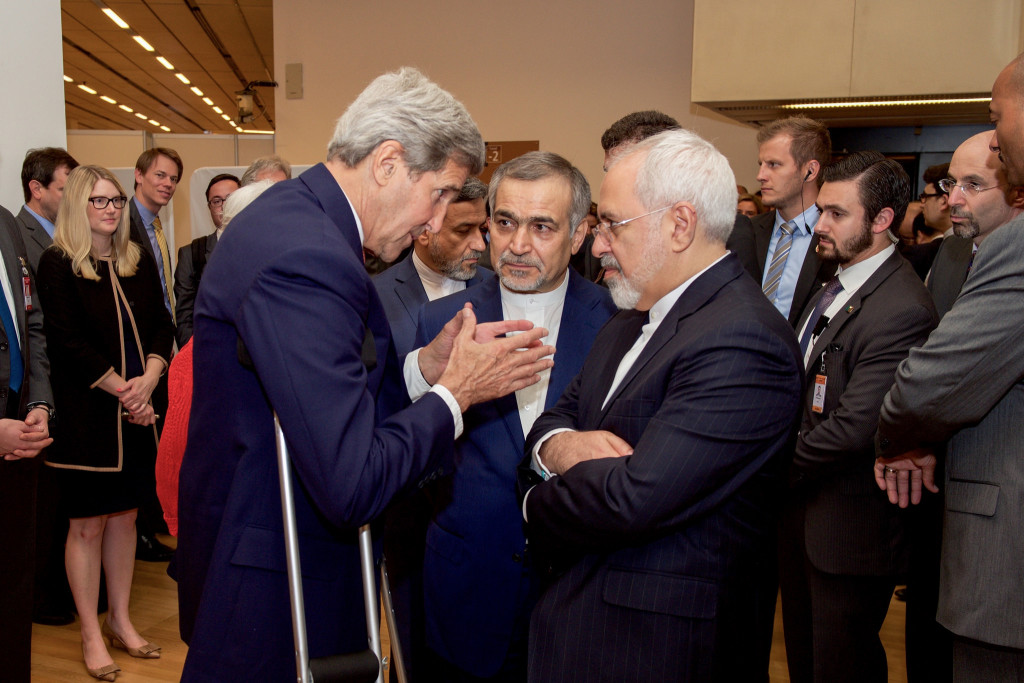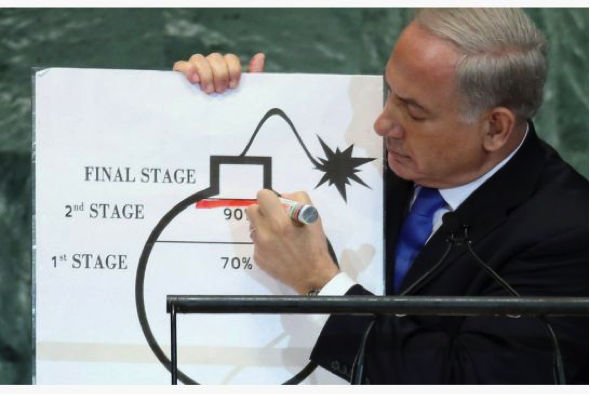Down and Dirty on the Iranian Nuclear Deal

Today, the P5+1 and Iran reached agreement on the Joint Comprehensive Plan of Action (JCPOA). The agreement’s provisions expand upon the U.S. fact sheet, released after the previous round of nuclear negotiations with Iran concluded last April. The strength of this agreement centers on its robust monitoring of the full front end of the Iranian nuclear fuel cycle for 25 years. The agreement is structured around the monitoring of Iran’s uranium throughput and so-called downstream activities related to enrichment. These safeguards are in excess of Iran’s voluntary implementation of the Additional Protocol — an inspection regime designed to strengthen the International Atomic Energy Agency’s monitoring of nuclear facilities.
While much of the focus has been on breakout (the time it would take Iran to enrich 25 kilograms of 90% uranium-235), the reality has always been that the current inspection regime would — in all likelihood — detect this activity in short order. The quick detection of such a diversion of uranium would — almost certainly — have prompted the tightening of sanctions or the use of military force to destroy elements of Iran’s nuclear fuel cycle, even before the conclusion of the JCPOA. To be clear, breakout time is not an irrelevant metric. Instead, it needs to be put in context; particularly how Iran’s continued installation of centrifuges before conclusion of the first Joint Plan of Action (JPOA) in November 2013 placed limits on Iran’s enrichment program. These overarching limits were premised on real concerns about Iran’s nuclear program and its growing enrichment capacity.
For a relatively accurate understanding of Iran’s nuclear status in October 2013, one need only look to the bomb cartoon Israeli Prime Minister Benjamin Netanyahu used as a prop during a speech to the United Nations in 2012.
 The cartoon accurately claimed that Iran had done 70% of the work to produce 25 kg (1 significant quantity of HEU, or the amount of weapons grade uranium needed for a relatively crude first generation nuclear core) of 90% enriched uranium. This metric was based on the performance of Iran’s IR-1 centrifuges and its stockpiling of 20% enriched uranium.
The cartoon accurately claimed that Iran had done 70% of the work to produce 25 kg (1 significant quantity of HEU, or the amount of weapons grade uranium needed for a relatively crude first generation nuclear core) of 90% enriched uranium. This metric was based on the performance of Iran’s IR-1 centrifuges and its stockpiling of 20% enriched uranium.
Natural uranium is primarily made up of two isotopes: uranium-238 and uranium-235, with the latter accounting for 99.2% of the element’s isotopic configuration. For simplicity, a nuclear weapon requires uranium enriched above 80%, whereas most reactor designs use fuel enriched to ~5%. Enrichment is the process of removing U-238 through the spinning of centrifuges. Thus, by enriching to 20%, Iran had removed much of the U-238 isotopes, which means that it required less work and time to remove the remaining U-238 from stockpiled 20% enriched uranium.
The concern, therefore, was that Iran would be able to enrich to weapons-grade in less than month, or in between IAEA inspections. This would have, per certain definitions of “nuclear armed,” rendered Iran a nuclear weapons state, or to quote Ehud Barak, they would have entered the “zone of immunity,” wherein a military strike on Iranian facilities would fail to destroy the the HEU needed for the core of a nuclear weapon.
For these reasons, the main thrust of the first JPOA in November 2013 centered on Iran’s halting of 20% enriched uranium and the decrease in its stockpile of low enriched uranium (which it did in January 2014). Taken together, these two provisions extend the breakout time to about one year, whereas before November 2013 it was 2–3 months. The JCPOA has locked this break out time in place for ten years through the capping of Iran’s centrifuge numbers, the requiring of Iran to decrease its LEU stock to below 300kg, and provisions relating to the production of uranium gas — the material that is fed through centrifuges.
The agreement also includes an inspection regime written — it seems — to address concerns about Iran’s past nuclear weapons program. It is incredibly difficult to detect a clandestine centrifuge program, owing the facilities small footprint and the small amount of power required to spin centrifuges. The United States has largely failed in its effort to detect such facilities in the past, with a key exception: the Islamic Republic of Iran. This suggests that the program has been penetrated by intelligence services.
Regardless, the agreement leaves little to chance and has built an inspection regime to ensure that Iran cannot build a small, undeclared enrichment plant to support a dedicated nuclear weapons program. The JCPOA requires that Iran accept monitoring on centrifuge production facilities for between 20 and 25 years. Per the agreement, Iran will declare the location of its flow-forming machines — the specialized tool needed to form the rotors used for gas centrifuges. In other words, the P5+1 will have a complete list of where Iran makes centrifuge components and where the equipment needed to do so is stored, and will then be able to monitor these areas for 20 years. This is in addition to the deal’s requiring of Iran to allow monitoring of its uranium mines for 25 years.
This monitoring is designed to prevent “sneakout,” or the clandestine development of a second — undeclared — fuel cycle for a nuclear weapons program. These provisions allow for the IAEA to account for the amount of uranium mined and milled, compare it to the amount converted into uranium gas (UF6) at Isfahan, then compare that amounts with UF6 that shows up Natanz, before monitoring and then measuring the amount uranium enriched.
This renders the debate about the 10-year sunset on some centrifuge restrictions moot. After the 25-year expiration of these provisions come off, Iran will still be beholden by its expected future ratification of the Additional Protocol and, critically, modified code 3.1. The latter requires Iran to inform the IAEA when it makes the decision to build a nuclear facility, rather than only 180 days before the introduction of fissile material at the site (Iran — contrary to international norms — had been following the old code and therefore has maintained that it had not violated its safeguards agreement by not declaring certain nuclear sites.)
This means that United States can have confidence that it would detect the diversion of equipment or fissile material in near real time for at least 25 years, before those inspection provisions expire, leaving only the Additional Protocol. It also helps strengthen the military option, should Iran fail to live up to its commitments. Iran’s accounting for and allowing of monitoring of its centrifuge workshops actually helps with targeting. In the case of North Korea, for example, it is unclear that the United States actually knows where its enrichment program is located, decreasing the credibility of a strike on its nuclear facilities because the confidence that the program would be sufficiently damaged would be in doubt. Iran will give the United States this information and the IAEA will monitor it. In real time. Arguably, this would increase the credibility of the military option, owing to the fact that the United States would be assured of destroying much — if not all — of the critical components needed to enrich uranium.
To be clear, this agreement does nothing to address the regional issues related to Iran’s policies in Iraq and Syria. The Iraqi and Syria files do not appear to be in control of the Ministry of Foreign Affairs and office of the president — the two key bureaucracies that have pushed for the conclusion of a nuclear agreement with the West. More conservative factions appear to be running Iran’s numerous wars in the region, casting further doubt about the good will from the nuclear deal spilling over and changing Iran’s calculus in the Levant and the Gulf.
Instead, what it does do is remove the specter of a nuclear latent Iran that has the capability to coerce its neighbors by threatening to quickly enrich enough material for a nuclear weapon. This means that the United States and its European allies should refrain from casting this agreement as prelude to discussions about Iran’s role in the region. The Arab Gulf states are intensely skeptical of Iranian policy in Iraq and Syria, viewing it as part of broader effort to cement Iranian hegemony in the Gulf region. Beyond concerns about Iranian nuclear latency, some in the Gulf view the easing of sanction as a prelude to increased funding for Iranian-backed groups on the region — most of which are fighting against rebel groups allied with the Gulf States. The Arab discontent, therefore, is not nuclear-specific, but tied to ancillary issues related to the easing of Iran’s nuclear-related isolation. The deal will not fix these dynamics, requiring the United States to balance its interest in nonproliferation with its regional allies’ concerns about Iranian backing for rebel groups/militias.
A more pronounced regional rapprochement would require the Gulf Arab states deciding that Iran had changed its behavior, rather than simply agree to an intrusive inspection protocol. The United States would thus be wise to temper expectation in the coming days and weeks. In the near future, there will certainly be implementation issues and the regional dynamics that have fed the narrative that Iran — with U.S. support — is transforming into a regional hegemon will not change. This agreement is narrowly focused; addressing very specific nonproliferation concerns that were of paramount concern as recently as November 2013. Thus, on its nonproliferation merits, the deal is a “win” for the United States. However, it will not pave the way for easy answers the region’s numerous crises; it may in fact make them more difficult to solve.
Aaron Stein is a Nonresident Fellow with the Rafik Hariri Center for the Middle East, a Doctoral Fellow at the Geneva Center for Security Policy, and an Associate Fellow at the Royal United Services Institute in London.

